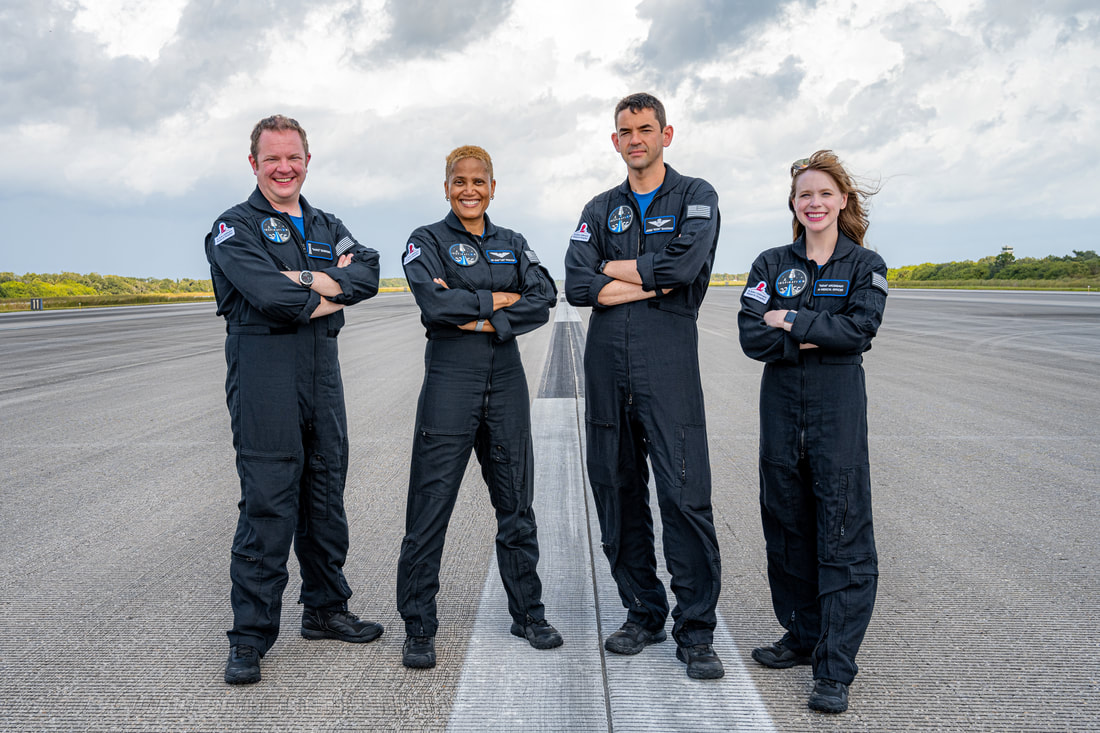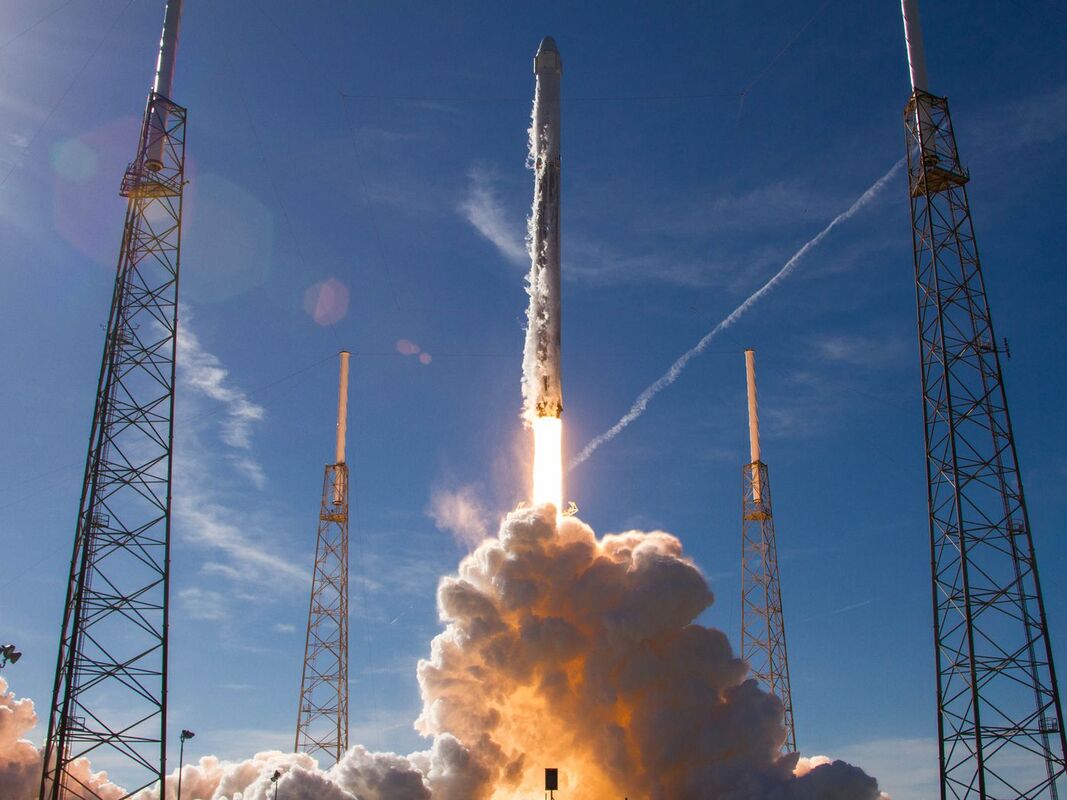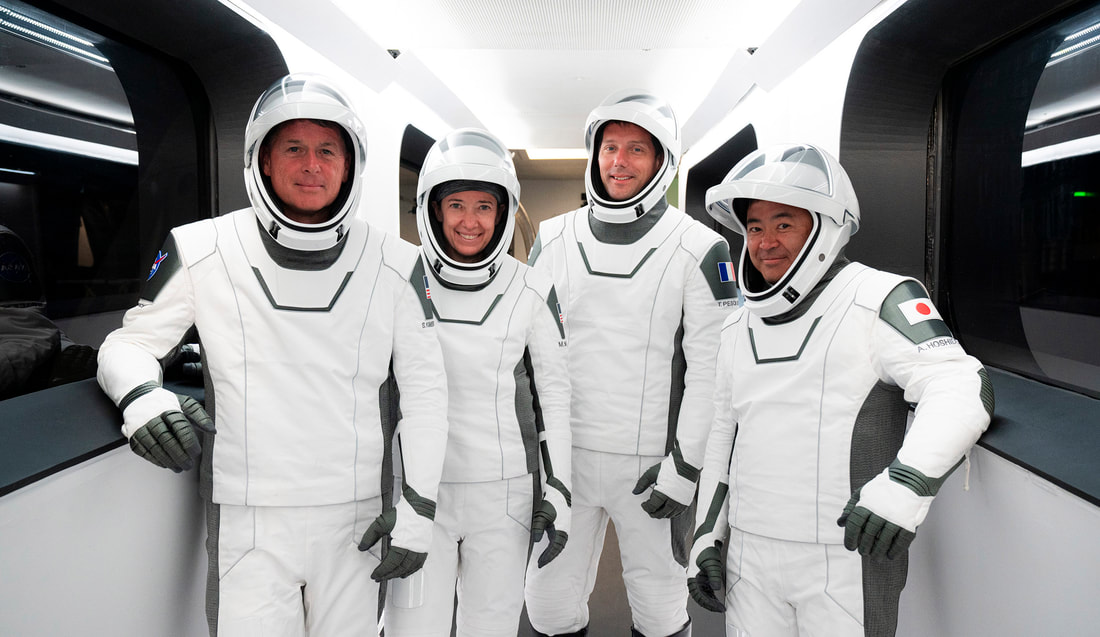|
Jared Isaacman, the billionaire entrepreneur who led the first all-private-citizen crew to orbit in September, has commissioned three additional spaceflight missions in what amounts to a privately funded space program with Elon Musk’s SpaceX. Like NASA’s Mercury, Gemini and Apollo programs at the dawn of the Space Age, the flights — dubbed Polaris, for the North Star — will seek to systematically chart new territory in bold, groundbreaking missions. In doing so, they would dramatically accelerate the progress of commercial spaceflight in what has become a new era of exploration, where private companies — and people — are claiming the rarefied territory that was once the exclusive domain of governments. The first flight, which could come by the end of the year, will aim to send a crew of four farther than any other human spaceflight in 50 years and feature the first private-citizen spacewalk, Isaacman said in an exclusive interview with The Washington Post. The second flight also would be aboard SpaceX’s Dragon spacecraft, the vehicle that NASA now relies on to fly astronauts to the International Space Station. The third flight in the series, however, would be the first crewed mission of the next-generation Starship spacecraft, now under development by SpaceX and which NASA intends to use to land astronauts on the moon. Last year, Isaacman, the founder and CEO of Shift4, a payment processing company, funded what was called the Inspiration4 mission. That flight sent Isaacman and three other private citizens — strangers until they were chosen for the mission — into orbit for three days in a flight that raised more than $240 million for St. Jude Children’s Research Hospital. The flight reached an altitude of 367 miles, higher than the Hubble Space Telescope and most space shuttle flights, and was operated entirely by SpaceX, which trained the crew, provided their spacesuits, kept them alive in orbit and then plucked them from the Gulf of Mexico after they returned to Earth. With NASA watching from the sidelines, it was yet another sign of the erosion of government’s long-held monopoly on human spaceflight, as private companies become more capable and daring. After the Inspiration4 flight, Isaacman hinted there might be more to come, saying, “That was a heck of a ride for us, and we’re just getting started.” In the interview with The Post, Isaacman said that he had been discussing the Polaris program with SpaceX before the Inspiration4 mission. After the Inspiration4 flight, he said, he was awed by the wonder of space travel and eager to go again. But he also had doubts about whether he should continue the private spaceflights because the Inspiration4 mission, which was chronicled in a Netflix series, had successfully completed so many milestones. And he feared he wouldn’t be able to break new ground. “I love space, and I would definitely want to take an opportunity to go back,” said Isaacman, who is also an aviation enthusiast and highly skilled jet pilot. “I just also felt like we got a lot of things done with Inspiration4, and I never wanted to potentially take away from that unless it could make a really good impact on the world.” He didn’t want to proceed until he was convinced that the additional flights would “serve the bigger purpose of opening up space for everyone and making humankind a multiplanetary species and, ideally, have a benefit for the things we’re trying to accomplish back here on Earth.” Isaacman and SpaceX did not disclose how much he was paying for the flights, though the figure could easily be several hundred million dollars. He also wouldn’t say exactly how much the Inspiration4 mission cost, except that the price was less than $200 million. In addition to the first commercial spacewalk, Isaacman said the first Polaris mission would endeavor “to go farther than anyone’s gone since we last walked on the moon — in the highest Earth orbit that anyone’s ever flown.” The record was set in 1966 by the Gemini 11 crew, which flew to 853 miles, the highest altitude for any non-lunar crewed mission, according to NASA. The flight, which would take off from the Kennedy Space Center in Florida, would require a license from the Federal Aviation Administration. But the FAA considers only the safety of people and property on the ground in granting such approval and not the risks their activities in space might pose to the crew. The crew would also test SpaceX’s Starlink laser-based satellite communications technology in space. While Starlink satellites now beam Internet signals to rural areas on Earth, SpaceX is hoping to use the system for human spaceflight missions to the moon and Mars. The program would also collaborate with several university and research institutions, including the University of Colorado at Boulder, Embry-Riddle Aeronautical University, Johns Hopkins University Applied Physics Laboratory and the U.S. Air Force Academy. Isaacman said the first mission would also conduct a study before and after the spacewalk to test how people cope with decompression sickness and why it varies. The crew would also gather data on how radiation affects the human body and how microgravity changes the structure of astronauts’ brains and eyes. As private companies erode government’s hold on space travel, NASA looks to open a new frontier Isaacman will be the commander of the first Polaris flight, known as Polaris Dawn. He’ll be joined by Scott “Kidd” Poteet, a former Air Force pilot who served as the mission director for Inspiration4, and two SpaceX lead operation engineers, Sarah Gillis and Anna Menon, who help prepare astronauts for flights on the company’s Dragon spacecraft. The four got to know one another during the Inspiration4 mission and have “a foundation of trust they can build upon as they undertake the challenges of this mission,” the crew said in a statement. Menon is married to Anil Menon, SpaceX’s first flight surgeon, who was recently selected by NASA to join its astronaut corps. When the couple told their 4-year-old son that Anil Menon was going to be a NASA astronaut, “the first words out of his mouth were, ‘Mama, when are you going to become an astronaut?' ” Anna Menon said in an interview.
A few weeks later, Isaacman asked her to join the Polaris crew, and now she will likely reach space before her husband. In addition to setting an altitude record, the Polaris Dawn crew is also aiming to perform a spacewalk, which would be a first for an all-private-citizen spaceflight. Since the Dragon capsule doesn’t have an airlock, the crew would have to put on pressurized spacesuits and slowly depressurize the cabin before opening the hatch at the top of the capsule. Then they could climb outside to float in space, while being tethered to the spacecraft. Isaacman said it had not yet been decided whether everyone would get the chance to venture outside and that it was one of many details of the operation that are still being worked out. To perform the spacewalk, SpaceX is developing more advanced spacesuits that would keep the astronauts safe in the vacuum of space. The spacewalk would add an additional layer of difficultly and risk to an endeavor already fraught with danger. NASA astronauts spend months training for their spacewalks on the International Space Station, practicing underwater in a massive pool at the Johnson Space Center in Houston to simulate the weightless environment of space. Stepping outside the space station is considered among the most dangerous activities an astronaut can undertake, and it’s never before been attempted by nonprofessional astronauts. Still, the Polaris crew said they were confident that they could harness NASA’s experience and that SpaceX would be able to ensure their safety on what are known as extravehicular activities, or EVAs. But if Isaacman and his crew were to fly in it first, that would mark a fundamental shift in human spaceflight. Usually, NASA relies on its most seasoned astronauts for the first crewed test flights of new rockets. On the first human flight of SpaceX’s Falcon 9 rocket, for example, veteran NASA astronauts Bob Behnken and Doug Hurley were the first to test it out. Isaacman said that Starship will fly many times before the first crewed flight. “I expect in good SpaceX fashion, they’re going to do an awful lot of flights and get a lot of data before the first human beings get on board that vehicle,” he said. Having a private-citizen crew be the first to fly Starship is not a slight to NASA, Isaacman said, but rather another sign of how space exploration is undergoing a fundamental shift. “NASA has paved the way for everyone — just to be immensely clear on that,” Isaacman said. “We’re all here today because of their accomplishments and sacrifices from so long ago. But what we’re seeing here is this is not exclusive to NASA. There is a ton of private money that’s trying to deliver on the dream that SpaceX has.”
0 Comments
Leave a Reply. |
Send us an email at [email protected] if you want to support this site buying the original Division of Aero Patch, only available through this website!
All
|




 RSS Feed
RSS Feed